Trans Urethral Resection of Prostrate (TURP) Cost in Tunisia from top hospitals starts from TND 24880 (USD 8000)approx
.Trans Urethral Resection of Prostate treatment is an urgological procedure implemented on a global scale. The procedure is highly helpful in treating prostatic hyperplasia which are mostly benign in nature. These procedures are minimally invasive and have been proven to be excellent in terms of effectiveness. However, the success rate also depends on the type of tumor and extent to which it has already spread. In several cases, the tumor may have a chance of recurrence post procedure, which calls of multiple TURP.
TURP involves removal of benign tissues by thorough monitoring from the urethra. The procedure involves sharp end dissection or electrocautery of the tumor. Most frequently implemented for cutting off on additional tissue that causes the prostate to enlarge, TURP is executed with the help of a fine device, known as resectoscope. It is inserted through the urinary meatus or the opening in the penis, which then travels through the urethra, reaches the target region (prostrate) and shreds the excess tissue to release blockage in the urinary tract.
Trans Urethral Resection of Prostate treatment is offered to reduce the symptoms of prostate enlargement and other urine-related disorders. However, the procedure may result in several symptoms and side effects which needs to be closely monitored. In general, pain in the lower abdomen or back pain is common post procedure. However, in several cases, one of more of the following symptoms have been observed post-TURP treatments in several patients, which are:
In severe cases, the candidate may get into coma or even die due to multiple complexities.
In general, TURP treatment cost may vary from $4567 to $20,000 in major countries furnishing the procedure. However, in developing countries, the cost may be as low as $2000. Such variations depend on a number of factors which affect the treatment cost, these are:
Apart from this, the payable cost also depends on the insurance cover available for the candidate.
| Country | Cost | Local_currency |
|---|---|---|
| India | USD 3500 | India 291025 |
| Israel | USD 12500 | Israel 47500 |
| Lithuania | USD 4000 | Lithuania 3680 |
| Malaysia | USD 7000 | Malaysia 32970 |
| Poland | USD 4200 | Poland 16968 |
| South Korea | USD 6000 | South Korea 8056140 |
| Spain | USD 11000 | Spain 10120 |
| Thailand | USD 5800 | Thailand 206770 |
| Tunisia | USD 8000 | Tunisia 24880 |
| Turkey | USD 5050 | Turkey 152207 |
| United Arab Emirates | USD 5560 | United Arab Emirates 20405 |
| United Kingdom | USD 7500 | United Kingdom 5925 |
Treatment cost
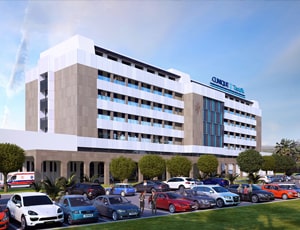
Taoufik Clinique located in Tunis, Tunisia is accredited by JCI. Also listed below are some of the most prominent infrastructural details:
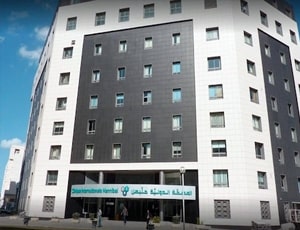
Apart from in-detail treatment procedures available, Hannibal International Clinic located in Tunis, Tunisia has a wide variety of facilities available for International Patients. Some of the facilities which are provided by them are Accommodation, Airport Transfer, Choice of Meals, Interpreter, SIM, TV inside room. Also listed below are some of the most prominent infrastructural details:
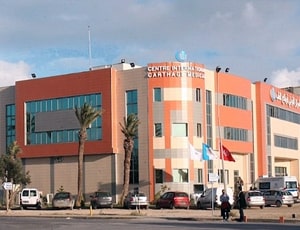
Apart from in-detail treatment procedures available, Carthage International Medical Center located in Monastir, Tunisia has a wide variety of facilities available for International Patients. Some of the facilities which are provided by them are Accommodation, Airport Transfer, Choice of Meals, Interpreter, SIM, TV inside room. Also listed below are some of the most prominent infrastructural details:

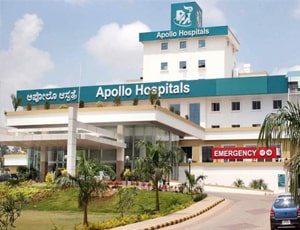
Types of Trans Urethral Resection of Prostrate (TURP) in Apollo Hospitals Bannerghatta and its associated cost
| Treatment Option | Approximate Cost Range (USD) | Approximate Cost Range (INR) |
|---|---|---|
| Trans Urethral Resection of Prostate (TURP) (Overall) | 3383 - 5686 | 274455 - 456287 |
| Conventional TURP | 1679 - 3971 | 138668 - 317780 |
| Laser TURP (GreenLight) | 2254 - 4970 | 185262 - 420831 |
| Laser TURP (Holmium) | 3314 - 5609 | 271715 - 470862 |
| Bipolar TURP | 2787 - 4578 | 227295 - 375124 |
DOCTORS IN 13 SPECIALITIES
FACILITIES & AMENITIES
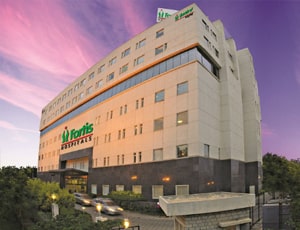
Types of Trans Urethral Resection of Prostrate (TURP) in Fortis Hospital and its associated cost
| Treatment Option | Approximate Cost Range (USD) | Approximate Cost Range (INR) |
|---|---|---|
| Trans Urethral Resection of Prostate (TURP) (Overall) | 3057 - 5070 | 250665 - 414365 |
| Conventional TURP | 1517 - 3564 | 124302 - 291877 |
| Laser TURP (GreenLight) | 2020 - 4566 | 166218 - 374347 |
| Laser TURP (Holmium) | 3033 - 5064 | 248560 - 417380 |
| Bipolar TURP | 2532 - 4080 | 207309 - 332965 |
DOCTORS IN 12 SPECIALITIES
FACILITIES & AMENITIES
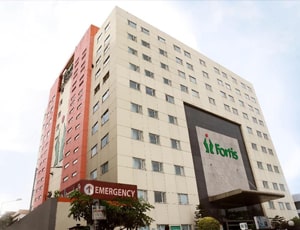
Types of Trans Urethral Resection of Prostrate (TURP) in Fortis Hospital and its associated cost
| Treatment Option | Approximate Cost Range (USD) | Approximate Cost Range (INR) |
|---|---|---|
| Trans Urethral Resection of Prostate (TURP) (Overall) | 3038 - 5087 | 249090 - 414900 |
| Conventional TURP | 1526 - 3540 | 125448 - 291684 |
| Laser TURP (GreenLight) | 2025 - 4565 | 167108 - 375988 |
| Laser TURP (Holmium) | 3050 - 5071 | 250598 - 415717 |
| Bipolar TURP | 2546 - 4062 | 207733 - 334078 |
DOCTORS IN 12 SPECIALITIES
FACILITIES & AMENITIES

Types of Trans Urethral Resection of Prostrate (TURP) in Sarvodaya Hospital and Research Centre and its associated cost
| Treatment Option | Approximate Cost Range (USD) | Approximate Cost Range (INR) |
|---|---|---|
| Trans Urethral Resection of Prostate (TURP) (Overall) | 3050 - 5063 | 249385 - 416656 |
| Conventional TURP | 1527 - 3560 | 125290 - 289985 |
| Laser TURP (GreenLight) | 2038 - 4549 | 166498 - 375102 |
| Laser TURP (Holmium) | 3044 - 5081 | 249489 - 414571 |
| Bipolar TURP | 2525 - 4072 | 207323 - 332231 |
DOCTORS IN 14 SPECIALITIES
FACILITIES & AMENITIES
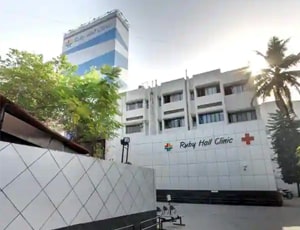
Types of Trans Urethral Resection of Prostrate (TURP) in Ruby Hall Clinic and its associated cost
| Treatment Option | Approximate Cost Range (USD) | Approximate Cost Range (INR) |
|---|---|---|
| Trans Urethral Resection of Prostate (TURP) (Overall) | 2793 - 4621 | 231761 - 383262 |
| Conventional TURP | 1381 - 3266 | 115126 - 266693 |
| Laser TURP (GreenLight) | 1892 - 4233 | 151981 - 344143 |
| Laser TURP (Holmium) | 2844 - 4639 | 233478 - 389420 |
| Bipolar TURP | 2320 - 3718 | 190980 - 309049 |
DOCTORS IN 13 SPECIALITIES
FACILITIES & AMENITIES
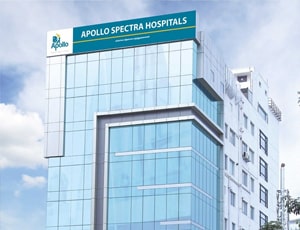
Types of Trans Urethral Resection of Prostrate (TURP) in Apollo Spectra Hospitals and its associated cost
| Treatment Option | Approximate Cost Range (USD) | Approximate Cost Range (INR) |
|---|---|---|
| Trans Urethral Resection of Prostate (TURP) (Overall) | 3039 - 5097 | 249728 - 416645 |
| Conventional TURP | 1522 - 3540 | 125188 - 292492 |
| Laser TURP (GreenLight) | 2024 - 4571 | 165746 - 375337 |
| Laser TURP (Holmium) | 3056 - 5084 | 249851 - 415585 |
| Bipolar TURP | 2534 - 4044 | 207915 - 332802 |
DOCTORS IN 10 SPECIALITIES
FACILITIES & AMENITIES
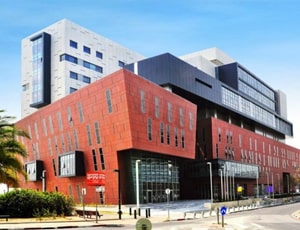
Assuta Hospital located in Tel-Aviv, Israel is accredited by JCI. Also listed below are some of the most prominent infrastructural details:
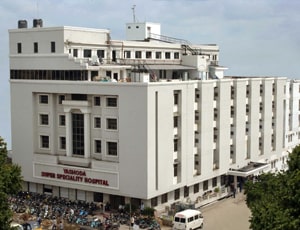
Types of Trans Urethral Resection of Prostrate (TURP) in Yashoda Hospital, Malakpet and its associated cost
| Treatment Option | Approximate Cost Range (USD) | Approximate Cost Range (INR) |
|---|---|---|
| Trans Urethral Resection of Prostate (TURP) (Overall) | 3052 - 5052 | 250395 - 417941 |
| Conventional TURP | 1521 - 3548 | 124651 - 290130 |
| Laser TURP (GreenLight) | 2028 - 4548 | 165980 - 374902 |
| Laser TURP (Holmium) | 3039 - 5085 | 248866 - 416314 |
| Bipolar TURP | 2545 - 4078 | 207085 - 331892 |
DOCTORS IN 10 SPECIALITIES
FACILITIES & AMENITIES
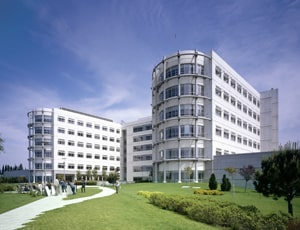
Types of Trans Urethral Resection of Prostrate (TURP) in Anadolu Medical Center and its associated cost
| Treatment Option | Approximate Cost Range (USD) | Approximate Cost Range (TRY) |
|---|---|---|
| Trans Urethral Resection of Prostate (TURP) (Overall) | 4562 - 7454 | 138230 - 219799 |
| Conventional TURP | 2212 - 5636 | 68889 - 171112 |
| Laser TURP (GreenLight) | 2824 - 6640 | 85644 - 199007 |
| Laser TURP (Holmium) | 4566 - 8023 | 136604 - 240471 |
| Bipolar TURP | 2841 - 6874 | 85575 - 199331 |
DOCTORS IN 12 SPECIALITIES
FACILITIES & AMENITIES
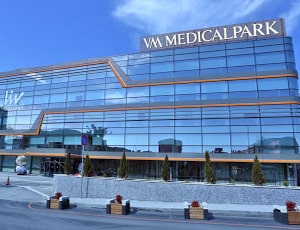
Types of Trans Urethral Resection of Prostrate (TURP) in I.A.U VM Medical Park Florya Hospital and its associated cost
| Treatment Option | Approximate Cost Range (USD) | Approximate Cost Range (TRY) |
|---|---|---|
| Trans Urethral Resection of Prostate (TURP) (Overall) | 4450 - 7456 | 133571 - 221445 |
| Conventional TURP | 2233 - 5506 | 67482 - 165956 |
| Laser TURP (GreenLight) | 2846 - 6704 | 83132 - 202139 |
| Laser TURP (Holmium) | 4447 - 8011 | 138624 - 240474 |
| Bipolar TURP | 2770 - 6848 | 85316 - 206398 |
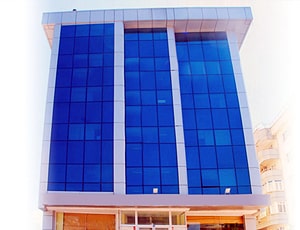
Types of Trans Urethral Resection of Prostrate (TURP) in Medical Park Canakkale Hospital and its associated cost
| Treatment Option | Approximate Cost Range (USD) | Approximate Cost Range (TRY) |
|---|---|---|
| Trans Urethral Resection of Prostate (TURP) (Overall) | 4439 - 7218 | 135049 - 221715 |
| Conventional TURP | 2250 - 5530 | 68677 - 169644 |
| Laser TURP (GreenLight) | 2817 - 6824 | 84374 - 203574 |
| Laser TURP (Holmium) | 4472 - 7750 | 135933 - 237205 |
| Bipolar TURP | 2771 - 6882 | 83076 - 205389 |
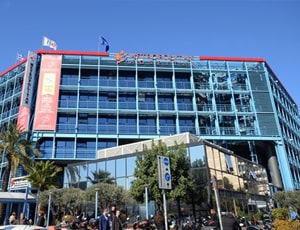
Apart from in-detail treatment procedures available, Metropolitan Hospital located in Pireas, Greece has a wide variety of facilities available for International Patients. Some of the facilities which are provided by them are Accommodation, Airport Transfer, Choice of Meals, Interpreter, SIM, TV inside room. Also listed below are some of the most prominent infrastructural details:
The enlarged prostate gland can become a concern for men after a certain age, leading to difficulties with urination. This issue often prompts medical professionals to recommend transurethral resection of the prostate (TURP) surgery.
The prostate gland undergoes two phases of growth as men age. The initial growth phase occurs during puberty when the gland doubles in size. The second phase of growth typically occurs after the age of 25, reaching its final size, which generally remains constant throughout life. However, in cases of benign prostatic hyperplasia, the prostate gland may further enlarge.
As the gland enlarges, it compresses the urethra, causing the bladder wall to thicken. Over time, the bladder weakens, resulting in incomplete urine emptying and allowing urine to remain in the bladder. Additionally, the narrowing of the urethra exacerbates urinary difficulties, leading to recurring issues with urination.
As of now, it is not totally clear why most men develop BPH but it mainly indicates an imbalance of hormones and sexual activities with advanced age. Apart from that, there can be urinary tract infection, narrowing of the urethra known as urethral stricture, inflammation of the prostate, bladder or stones in the kidney, nerve problems in controlling the bladder, or scarring in the neck of the bladder as a result of previous surgery.
The following are some of the symptoms of BPH:
Some of these above symptoms can occur even in men whose prostate has not enlarged significantly.
Patients are required to stay in the hospital for at least one to two days after the procedure. Patients who undergo TURP are required to have a catheter in place for urine drainage for at least a few days. The catheter is removed when the swelling reduces and the patient is in a position to urinate by himself.
It is normal to experience blood in the urine right after the surgery, pain at the time of urination, and frequent urination after the surgery. However, you must contact the doctor in case you are unable to urinate at all, develop fever, or notice the presence of clots in the urine.
After the surgery, you are required to:
Ask your healthcare adviser for the best multiple options and choose the one that meets your expectations
USD 6800 is the starting cost of Trans Urethral Resection of Prostrate (TURP) Surgery in Tunisia. While there are wide range of hospitals offering Trans Urethral Resection of Prostrate (TURP), international patients should always seek TEMOS-Certified Hospitals in Tunisia for the best results.
The Trans Urethral Resection of Prostrate (TURP) package cost in Tunisia varies from one hospital to another and may offer different benefits. The cost quoted by some of the best hospitals for Trans Urethral Resection of Prostrate (TURP) in Tunisia generally covers the pre-surgery investigations of the patient. The treatment cost usually includes the expenses related to hospitalization, surgery, nursing, medicines, and anesthesia. A prolonged hospital stay due to delayed recovery, new diagnosis and complications after surgery may increase the cost of Trans Urethral Resection of Prostrate (TURP) in Tunisia.
Trans Urethral Resection of Prostrate (TURP) in Tunisia is offered by multiple hospitals across the country. For quick reference, the following are some of the leading hospitals for Trans Urethral Resection of Prostrate (TURP) in Tunisia:
After discharge from the hospital, the patient has to stay for another 14 days in the country for complete recovery. This time frame is important to ensure that the surgery was successful and the patient is fit to fly back.
There are certain additional cost that the patient has to pay apart from the Trans Urethral Resection of Prostrate (TURP) cost. The per day extra expenses in Tunisia per person are about USD 50 per person.
Some of the best cities in Tunisia which offer Trans Urethral Resection of Prostrate (TURP) are:
After the Trans Urethral Resection of Prostrate (TURP) takes place, the average duration of stay at the hospital is about 2 days. The doctors team review the patient's recovery during this time with the help of blood tests and imaging scans. Once they feel that everything is on track, the patient is discharged.
There are more than 3 hospitals that offer Trans Urethral Resection of Prostrate (TURP) in Tunisia. These hospitals have proper infrastructure for the treatment of patients who require kidney transplant. Apart from good services, the hospitals are known to follow all standard and legal guidelines as dictated by the local medical affairs body or organization.